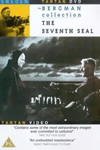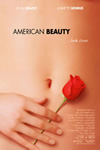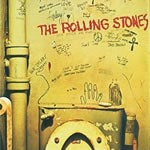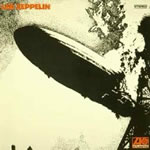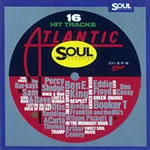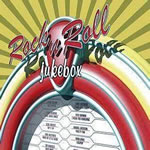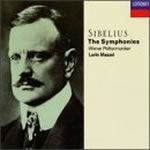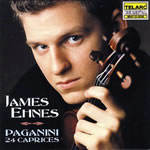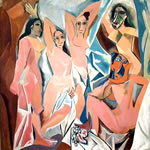The original sin was tasting the fruit of the tree of knowledge of good and evil. Eve immediately invented underwear, and perhaps because of their pants God was so disappointed that he chucked both her and her man out of Eden. Forever. And He set up two giant cherubim — not quite as cute as their later reputation — with flaming swords to chop up any mere human foolish enough to try and get back in. Condemning every generation to death may seem a harsh punishment for accepting a snake’s casual offer of an apple, but God surely knows best. Made in the image of God, man and the offspring of his rib have proved to be about as fair in their dealings ever since.
This knowledge of good and evil, denied by God to the dwellers of paradise, may be a dangerous thing. Later on, when God made one last attempt at reconciliaton with the sinners by appearing in human form, He said that we should not judge or we would ourselves be judged. I imagine that Hell will therefore first welcome the critics. Those know-it-all jokers who said that Beethoven was pretentious rubbish will be sitting in the eternal fires oppressed by the endless playback of their own errors, no doubt. ‘You said the Eroica was junk, but you can’t even whistle Chopsticks, and you’re as fat as a whale on a diet of blubber. What’s more, you smell like a bat cave in a heat wave.’ You get the idea.
Good and evil. Hard to tell really. St Augustine gave us the choice between ‘natural evil’ and ‘moral evil’. The latter are the acts of people — violations of morality. The former are what Insurance companies rather insultingly call ‘Acts of God’ (as if the cataclysms and catastrohpes of nature were His fault). But what Adam and Eve learned by hanging out with a snake was the ability to differentiate between good and evil. Up until that time, served pistachio ice cream either frozen or at room temperature they wouldn’t have known the difference. Both would have been ‘okay’, I suppose. There would be nothing dantastic and nothing disgustingly dreadful. I once actually did have ice cream made with salted pistachios, and given my reaction, I am definitely going to Hell.
I digress, but that’s surely the point. Herbert Read, one of the few art critics to actually enjoy art and consider artists as worthy as himself, said that when we look at a painting we either like it or we do not, and then we make up a justification for our reaction. Some of these justifications become fairly elaborate. I am always delighted on the reflection that one of the great critical edifices of 20th century art — the zealous promotion of the Abstract Expressionists by Clement Greenberg — was actually funded by the CIA. It gives a whole new dimension to critical veracity. Imagine my amusement that the Tate Modern’s Pollock show was sponsored by an ‘anonymous donor’.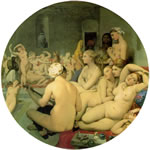
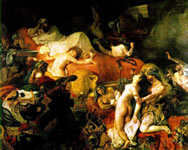

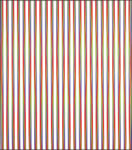

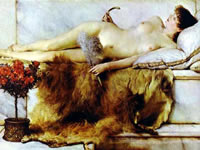




Occasionally, some artist breaks through and seems to achieve an almost universal acceptance (though even this may only be in a limited cultural sphere: there must be well over a billion people who have never heard of the immortal bard or of Rembrandt van Rijn). But the majority are accepted according to cultural caprice. Alma-Tadema and Bouguereau were far more popular in their day than Renoir and Cezanne. This leads to the myth that the great artists are before their time, but reference to Titian or even later Renoir shows that this is untrue: they can be very much of their time. It also fosters the childish notion that because a work is incomprehensible it is beyond the understanding of contemporary people. That one I leave to Hans not so Christian Anderson to explain. Something to do with naked potentates, or so he said.
Lao Tzu warned against categorising. We become so obsessed with determining which pigeon-hole to put an artifact into that we cease to make contact with it. We are blinded by categorisation. I despair when people tell me that they didn’t understand a play or a painting. I sense that they are looking for something in their own minds rather than in the world. When I show an abstract painting, I am sometimes asked if I also paint representationally. I understand the question: the enquirer would like to see a portrait or a landscape to know if I can actually paint (it’s okay, by the way, I can), before deciding whether they like the picture in front of them. One painter allegedly grew so frustrated when told that an onlooker didn’t understand one of his pictures that he frog-marched him into the garden and held up a flower, saying ‘Do you understand this?’ It is not that art should be incomprehensible. Most of the wealthy gurus have learned that gibberish can impress even the finest minds: ‘Wow, that sounds profound, maybe one day I’ll be developed enough to understand it!’ Sometimes a play or a painting is a riddle. It is very pleasant to evaluate a movie like The Seventh Seal or American Beauty, but it is well worth considering James Joyce’s aside on completing his labyrinthine Finnegans Wake: ‘This will keep the critics busy for two hundred years.’ When checking proofs, it is known that Joyce would often enjoy a typographical error and say ‘Let it stand’. His novel Ulysses is packed with them.This leads to the possibly important point that art is art when we see ourselves in it, when it leads us to feel either important (because we feel we understand) or humble (because we know we don’t). I like to paint in a way that leaves the observer to make the piece art or not. I am not expressing my emotions — I actually don’t think that you can record emotions in the way that you can record sounds and pictures; it is something far less precise and inevitably altered by the emotional interpretation of the observer. I am not inciting a deeper perception of some facet of reality — as a good portraitist may well do. I am presenting something for the observer to interact with. Interactivity has become such a buzz-concept in the 25 years since I started painting, but it is a proper term for my purposes. If there is art involved then it will be at the interface between the observer and the painting. And sometimes it seems to happen.
When I was still at college I painted a 20” x 16” oil, named for either Joyce or Robin Williamson Strings in the Earth and Air. I hung it on the wall in my living room. A fellow student saw it there and commented that it was like looking into the fires of Hell. A week later, and without prompting, another visitor spontaneously assured me that it was a picture of Paradise. Good enough.
We gather into cultural camps like tribes. Music, painting and movies form the boundaries between our camps. I think it was a Wildenstein who said that there had been no painting since Rembrandt. Often enough you will hear the lament that classical or even ‘serious’ music ended with Mozart or maybe Mahler. Some people only really listen to one musical form. I have met two individuals who limited themselves one to the Moody Blues and the other to Pink Floyd. One of the most intelligent men I have ever met — and Richard Lilly if you read this, please email me at jon@jonatack.com — said that he confined himself to Bach and Ellington. Others have to have something new. I admit that as a 14-year-old I epitomized this trait. I was pretty much uninterested in what had gone before. It was 1969, I wasn’t about to listen to last year’s music — to the extent of perpetually having to discover new musicians. So I ignored those old men the Rolling Stones after Beggar’s Banquet, and instead listened to Spooky Tooth and Led Zeppelin. I wanted to be on the cusp. My attitude now is not necessarily better, but it is more mature. By the time I was 15, I had realized that there were some Soul songs that were pretty good. By the time I was 20, I could even accept that some of the Rock and Roll my brother so loved had been interesting (as long as I didn’t have to listen to it). Since then I have realized that people develop intense passions about the arts. Religious and political fanatics will lay down their lives to defend some insult against their leader. The concept becomes more important than life itself. Astonishing, but it happens with football teams, nations (an interesting abstraction that one), and music. The individual takes on loyalty as an aspect of the self. Disliked bands are simply ‘crap’ (or more recently ‘gay’). I promote a more tolerant attitude (not towards Country music, of course), and understand that we like a piece of art partly because of how we met it, and through the associations it retains. I admit to sitting dumbfounded after sneering at Robbie Williams gaining the British public’s vote as the ‘most influential musician of the millennium’ (it does beggar logic though, doesn’t it?), when the extremely pleasant fellow I was talking too said, ‘Yes, but you have to admit that he’s a genius, don’t you?’ Often it is relatively easy to introduce someone to an absolutely foreign form by drawing comparisons between it and something familiar. Explain that Sibelius’s Fourth is Heavy Metal, and you might get a new listener. Better yet, play the Metal-head Yngwie Malmsteen shredding his guitar along to Paganini. Breaking down the snobbery of the Sibelius or Paganini listener may be more difficult, just say that Paganini had loads of Black Sabbath albums.The differentiation between folk and classical, or serious and popular musics is an interesting case in point. I was stimulated into writing a piece about Progressive Rock by the sniggering of John Peel and others. The aspirations of many of the Proggers seem pure to me and their achievements worthy. Okay, as Carl Palmer said, if you look up ‘pretentious’ you’ll find that Emerson, Lake and Palmer is the definition. But it is wrong to tar King Crimson, Gentle Giant, Colosseum and many others with that brush, and ELP had their moments. In writing the piece, I came to a better understanding of the demand for purity in pop music. John Peel, bless his departed soul, loved the simple, straightforward and thoroughly felt music of Punk and Dub. His favourite track was Teenage Kicks by the Undertones. He dismissed Prog as ‘bollocks’, but still took the cheque for narrating a documentary about ELP and Yes (it wasn’t just the Proggers who sold out, then).
Prog was something like the africanism that swept through early 20th century art, but in reverse. With Prog, Western Classical music swept through Blues-Rock. Picasso saw primitive Iberian sculpture and Benin bronzes and melded them into his own influential Demoiselles d’Avignon. It became highly fashionable to own Voodoo fetishes, a trend that expanded and continued through the century. The emotional potency of tribal art became a key reference for artists — for example, Pollock’s fascination with Navaho sand painting.I understand the point of view that the dissociation of work from its original ‘primitive’ culture and its re-interpretation by civilized Europeans raises important questions. Often as not, the imitators will not understand the context of the original work. Picasso certainly didn’t know the first thing when he painted Demoiselles. Fetishes have a religious, totemic significance, and no amount of anthropologizing or dancing with the natives can immerse you in that significance. We are saturated by our own culture. The observer will most certainly interfere with the experiment. Isadora Duncan’s primitive dancing seems rather silly now. It set the world on fire back then. But the culture we are saturated with is an amalgam of so many already interfused sources.
The context of the Blues and early Jazz was the oppression of Black Americans in the Jim Crow years after Reconstruction in the South. There is no way that a white boy from Surrey could understand living in a shotgun shack, sharecropping or being humiliated from dawn till dusk. He could call his friends ‘man’, echoing the Jazzers’ answer to forever being called ‘boy’ by white folks, but he couldn’t know what it was to be such a second-class citizen. So there can be no authentic white Blues. As the Bonzos asked ‘Can Blue Men Sing the Whites?’ But of course, the Jim Crow laws are gone, along with most of the shotgun shacks. And no matter how insistent the interviewer, she couldn’t persuade John Lee Hooker to pretend he fulfilled a stereotype of poor education. The Blues almost died in the Black community fifty years ago, and the modern force is Rap or Hip-hop, call it what you will. But the gangstas of Rap are often no more credible than a white boy pretending to have the Blues. A little research shows that good school grades and a college degree are not unusual among the rappers either.
Picasso pointed out that the museums are overflowing with the failures — the works that broke the rules. Because the art matters, not the rules. Music won’t allow itself to be categorized by the background of musicians. If Jazz had to be poor to be authentic, then we could throw away such middle-class kids as Ellington and Miles. That would be a shame.
Still there is a yearning for authenticity. The knowledge of good and evil is a terrible thing, as God tried to explain to our dumb forbears. Truth is that while art does come out of a culture, it has to come out of an individual too. That individual might even be rich, though the fact that so few rich people have contributed directly to the arts might be another reason to put them up against the wall. The art may be at the end of a long line of development, or even at the end of that line, as Bach seems to be. Or it may be an individual stance against development (I’m sure that Ornette Coleman and Schoenberg must have felt pretty isolated at times). The attempt to categorise, to say why art is right or wrong, is ultimately pointless. It is only when we get beyond the reasons that we find the art. So, as the man who was God said, judge not and you won’t be judged. Perversely, this doesn’t mean that we shouldn’t be profoundly opinionated, it just means that every now and then we should look beyond the little boundaries of taste with which we have fenced ourselves and say: ‘There could be something else out there, and it might even be better.’
July 2005

.jpg)
